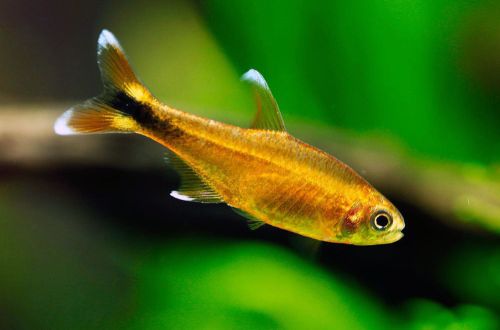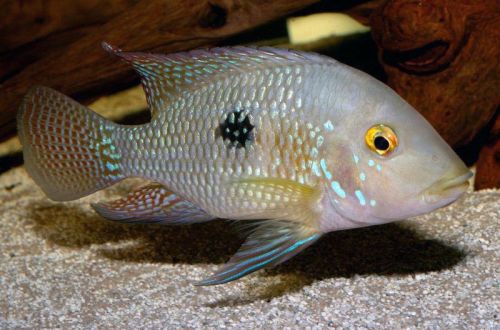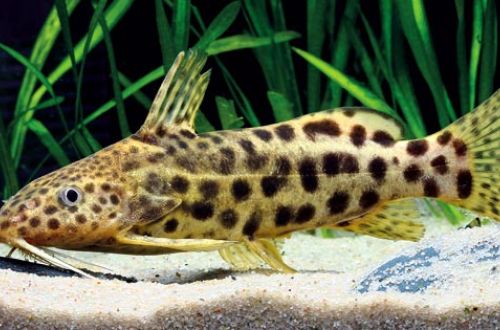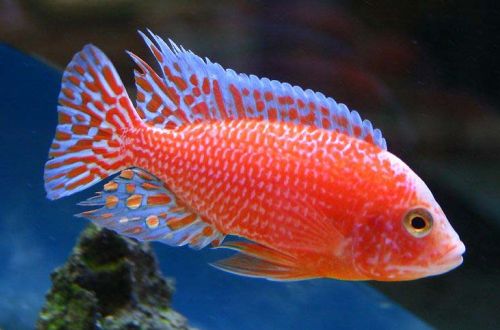
Hasemania
The copper tetra or Hasemania, scientific name Hasemania nana, belongs to the Characidae family. It is considered one of the best Tetras for the general aquarium due to its bright coloration, excellent compatibility with other popular fish, hardiness and unpretentiousness.

Mukati
Habitat
It comes from the San Francisco River basin (port. Rio São Francisco) from the territory of Brazil. It occurs in small streams, rivers and channels of the main channel. The habitat experiences seasonal fluctuations in water levels, and the river itself flows through hilly, in places mountainous terrain.
Ruzivo rupfupi:
- Huwandu hweiyo aquarium - kubva pa70 malita.
- Tembiricha - 23-28 ° C
- Kukosha pH - 6.0-8.0
- Kuoma kwemvura - yakapfava kune yakaoma (5-20 dGH)
- Substrate mhando - chero
- Kuvhenekera - kuderera
- Mvura ine brackish - kwete
- Kufamba kwemvura - pakati nepakati
- Hukuru hwehove hunosvika 5 cm.
- Chikafu - chero chikafu
- Temperament - rugare
- Kuchengeta muboka revanhu vanosvika 8-10
tsananguro
Adults reach a length of about 5 cm. The color is silvery with a rich copper tint. Most of the caudal peduncle is dark, the tips of the tail and fins are white. Females are more modestly colored, the colors are not so saturated.
chikafu
Absolutely not pretentious appearance, the walls accept all types of popular food (dry, frozen, live). Their quality and composition largely affect the color of the fish, so strive to purchase food only from well-known and reputable manufacturers.
Kugadzirisa uye kutarisira, kurongeka kweiyo aquarium
For a group of fish of 8-10 individuals, a tank of 70 liters or more will be required. Hasemania is not demanding in the design of the aquarium and adapts perfectly to various water conditions. The only recommendation is the presence of subdued lighting, because in bright light the color of the fish noticeably fades, becomes nondescript.
Maitiro uye Kuenderana
A peaceful schooling fish, kept in a group of at least 8–10 individuals, with a smaller number become somewhat aggressive, although with their size it is unlikely that they will be able to cause problems to their neighbors. Compatible with many well-known aquarium species, including viviparous, zebrafish, rasboras, corydoras catfish, some gourami, South American cichlids and others.
Kubereka / kubereka
Kuonekwa kwefry kunogoneka kunyangwe mune yakajairika aquarium, asi huwandu hwavo huchave hudiki uye huchadzikira zuva rega rega kana husina kuiswa mune imwe tangi nenguva. Izvo zvose zvinokanganisa hove dzevanhu vakuru, iyo fry ndeyekuwedzera kukuru kune kudya.
In order to increase the chances of survival and somehow systematize the breeding process (spawning was not spontaneous), it is recommended to use a spawning aquarium, where sexually mature fish are placed during the mating season. Usually this is a small container with a volume of about 20 liters. The design is arbitrary, the main emphasis is on the substrate. In order to protect the eggs from being eaten (Tetra copper eats its own offspring), the bottom is covered with a fine-mesh net, or small-leaved plants or mosses (for example, Java moss). An alternative way is to place a layer of glass beads with a diameter of at least 1 cm. The lighting is subdued, a heater and a simple airlift filter are sufficient from the equipment.
Kukurudzira kwekutanga kwemwaka wekusvirana kushanduka zvishoma nezvishoma kwezvigadziro zvemvura muaquarium yakajairika kusvika kune zvinotevera zvakakosha: pH 6.0–6.5, dH 5–10 patembiricha ingangoita 28–30°C. Hwaro hwekudya hunofanira kunge hwakaoma kana chikafu chipenyu.
Nyatsocherechedza hove, munguva pfupi dzimwe dzadzo dzichanyatsokomberedza - idzi dzichava vakadzi vanozvimba kubva kune caviar. Vanhurume vachatanga kuita manzwi akafanana nekukorokoza - ichi chinhu chemhando iyi uye kuratidza zviratidzo zvekutarisa kune avo vakasarudzwa. Gadzirira uye uzadze tangi yekuberekesa nemvura kubva mutangi remunharaunda. Isa vakadzi ikoko, zuva rinotevera varume vaviri vakakura vanotaridzika zvakanyanya kushamisa.
It remains to wait until spawning occurs, its end can be determined by females, they will “lose weight” greatly, and eggs will be noticeable among the vegetation (under a fine mesh). The fish are returned. The fry will appear within 24-36 hours, after another couple of days they will begin to swim freely in search of food. Feed with specialized microfeed.
Zvirwere zvehove
Iyo yakaenzana aquarium biosystem ine mamiriro akakodzera ndiyo yakanakisa vimbiso yekupokana nekuitika kwechirwere chero chipi, saka, kana hove yachinja maitiro, ruvara, mavara asina kujairika uye zvimwe zviratidzo zvinoonekwa, tanga watarisa maparamendi emvura, uye wozoenderera mberi nekurapa.





